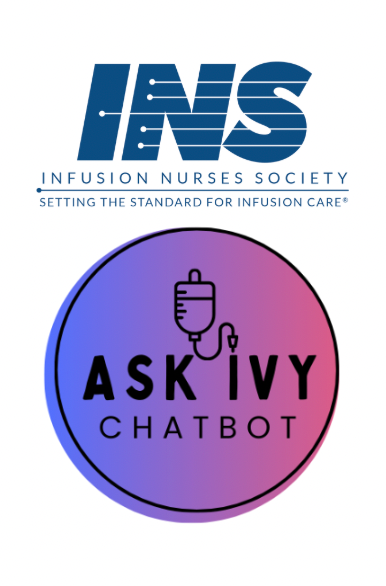How should I assess CVAD patency?
The Infusion Nurses Society Infusion Therapy Standards of Practice 1 states to assess and document patency for all types of venous access devices prior to intermittent infusions and regularly for continuous infusions.
How to check patency2
When assessing CVAD patency, the correct sequence is to aspirate, discard and then flush. Stagnant fluid within the lumen of the catheter maybe contaminated with microorganisms (e.g. after poor needleless connector disinfection) so it must not be flushed into the patient; instead, it should be withdrawn and discarded.
1. Use a sterile, empty 10 ml syringe to aspirate 3-5 ml of blood for adults or twice the volume of the CVAD for paediatric patients
2. Discard unless it is used for blood cultures
3. Then flush with 20 ml 0.9% sodium chloride in a new syringe for adults or double the volume of the CVAD in a new 10 ml syringe for paediatric patients using a pulsatile technique and finishing with the appropriate clamp-disconnect technique according to the type of needleless connector.
If there is no blood return when you access a lumen, you need to assess the risk.
- How long since it has been flushed?
- Has the patient had prior episodes of occlusion?
- How often has patency been assessed?
A possible option is to place an empty 10 mL syringe with all air removed and the plunger against the end of the barrel onto the lumen and to push the plunger a couple of times against the end of the syringe. This is demonstrated in the eviQ blood sampling video 3 and is included in the CNSA vascular access guidelines 4 under patency assessment.
If no blood return is present, further investigation is required before use, for example checking for mechanical occlusions, position of the catheter tip, assessment for thrombotic or chemical occlusions, or functionality via diagnostic imaging if blood return is still not present.
When to check patency2
The Cancer Nurses Society of Australia provides specific recommendations for the frequency of patency assessment of peripheral intravenous cannulas and central venous access devices for paediatric and adult patients:
1. Inpatients - at least once per shift for inpatients
2. Prior to all medication administration including blood products, parenteral nutrition, antibiotics, electrolytes, intravenous iron
3. Prior to all chemotherapy administration
4. Prior to use for Interventional Radiological investigations
5. Unused lumens of a multi-lumen CVAD - once per shift for inpatients and at each outpatient or home visit
6. Outpatient, ambulatory, or home visit patients- during access at each visit
Patency findings should be documented once per shift for inpatients and at each visit for outpatient, ambulatory, or home visits.
References:
1. Nickel, B., Gorski, L., Kleidon, T., Kyes, A., DeVries, M., Keogh, S., Meyer, B., Sarver, M. J., Crickman, R., Ong, J., Clare, S., & Hagle, M. E. (2024, Jan-Feb 01). Infusion Therapy Standards of Practice, 9th Edition. J Infus Nurs, 47(1S Suppl 1), S1-S285. https://doi.org/10.1097/NAN.0000000000000532
2. Patency Assessment - CNSA - Cancer Nurses Society of Australia
3. Cancer Institute NSW and eviQ. Central Venous Access Devices. Clinical procedures https://education.eviq.org.au/videos-webinars/videos/central-venous-access-devices
4. CNSA Vascular Access Devices: Evidence-Based Clinical Practice Guidelines. Updated January 2024. https://www.cnsa.org.au/practiceresources/vascular-access-guidelines
Last Updated on: 08/03/2024









